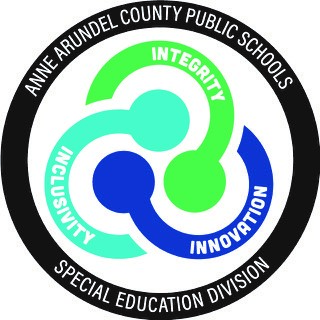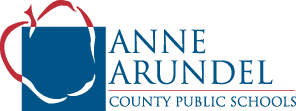Erin Belcher
Coordinator of Special Services
410-424-3267
Lauren Maloney
Resource Teacher for Students who are Visually Impaired and Blind
410-424-3261
Blind and Visually Impaired

Contacts:
Vision Services provide services to children, ages birth through 21, who have been identified as visually impaired. Teachers of the Blind and Visually Impaired and Orientation and Mobility Instructors deliver itinerant vision services to students in their home school or current school placement.
The population of children identified as blind or visually impaired is extremely diverse. These children display a wide range of vision difficulties and require varying adaptations for their vision loss. With regard to degree of vision, the student population ranges from children who are totally blind or have minimal light perception to varying degrees of low vision. For some students, a visual impairment is their only disability while for others it is one of several identified disabilities that will affect learning.
In addition, students with similar degrees of vision loss may function very differently. Visual functioning is determined by the nature of the diagnosis as well as multiple additional factors (i.e. cognitive ability, physical/motor development, emotional factors, and experiential backgrounds). Therefore, in addition to the nature and extent of the visual loss, a variety of factors need to be considered in designing an appropriate educational program for a blind or visually impaired student and these factors could change over time.
Referral Process
If an educator or parent suspects that a student has a visual impairment, the Vision Resource Teacher (VRT) should be contacted immediately to participate in the referral process. The team, with the assistance of the VRT, will review all available information to determine if a possible visual impairment is indicated. This information may include school vision screening, medical reports, classroom teacher reports, and educational data. Based on the findings of the inquiry, the team, with the assistance of the VRT, will then determine the next appropriate step, which could include school based interventions, referral to the 504 committee, or referral to the Individuated Education Program (IEP) team. The VRT or a Teacher of the Visually Impaired (TVI) must participate in reviewing the screening information to determine if a vision evaluation is needed.
Evaluation
IDEA provides specific guidance in the evaluation of students with visual impairments. An evaluation must assess in all areas related to the child’s suspected disability by trained and knowledgeable personnel. An assessment should include the nature and extent of the child’s visual impairment and its educational impact. This should include how it interferes with the child’s ability to be involved in and progress in the general curriculum. The evaluation must include a review of a current medical report (within one year), a functional vision evaluation and a learning medium assessment. It may also include the evaluation of skills in Orientation and Mobility, assistive technology, and other functional skills.
Vision Services
Vision Services are provided by a certified Teacher of the Visually Impaired (TVI). In addition to mastering skills taught to all children, children with visual impairments must receive instruction in the skills the IEP team determines are necessary for the child to obtain access to information needed to participate in the general education curriculum as well as the development of skills related to future employment, vocational training or postsecondary education. For a student with a visual impairment, these skills are often referred to as the Expanded Core Curriculum. These skills include: compensatory skills in communication and listening, Braille, social interaction skills, recreation and leisure skills, visual efficiency skills, use of assistive technology devices, low vision aids, and career education.
Orientation and Mobility
Orientation and mobility (O&M) is defined as a related service provided to blind and visually impaired students by an O&M instructor to enable students to attain systematic orientation to and safe movement within their environments in school, home, and community. It includes the teaching of the following:
Spatial and environmental concepts and use of information received by the senses to establish, maintain, or regain orientation and line of travel
To use the long cane to supplement visual travel skills or as a tool for safely negotiating the environment for students with no available travel vision
To understand and use remaining vision and distance low vision aids
Other concepts, techniques, and tools.
Resources
American Foundation for the Blind
American Printing House for the Blind
Accessible Instructional Materials
Braille
CVI
DeafBlind
Orientation and Mobility
Anne Arundel County Public Schools has recently updated its definition of students under the disability category of Visual Impairment, Including Blindness. In accordance with COMAR 13A.05.01.03B(84), a Visual Impairment is defined as an impairment in vision, which, even with correction, adversely affects a student's educational performance and includes both partial sight and blindness. Any impairment in vision, regardless of severity, is covered, provided that such impairment, even with correction, adversely affects a student's educational performance. Convergence Insufficiency, and other binocular visual disorders, are not excluded from the definition of Visual Impairment.
